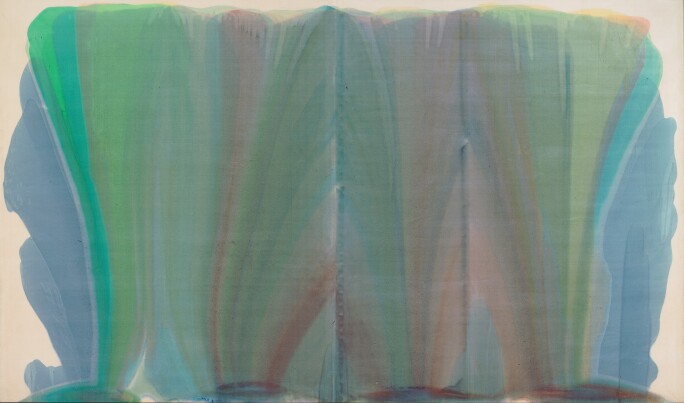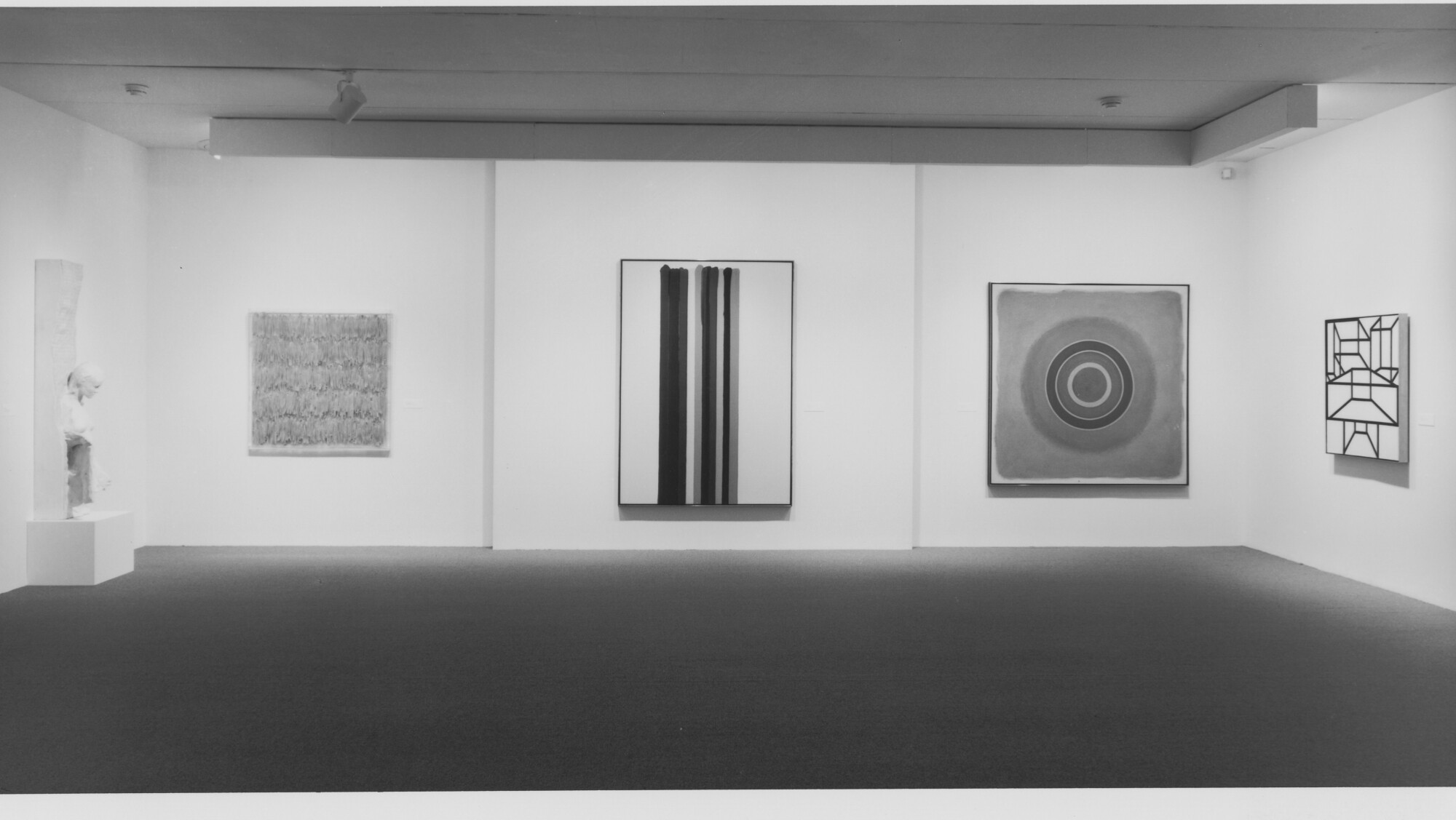
"I wanted color to be the origin of painting...I wanted to make color the generating force."
Pulsating with rich atmospheric hues, Sounds in the Summer Night is a testament to Kenneth Noland’s virtuosic exploration of color and an outstanding example from the artist’s acclaimed Target series, a body of work long recognized as one of the seminal achievements of post-war American abstraction. The year after its completion in 1963, Sounds in the Summer Night was selected to represent the United States at the Venice Biennale, one of the most significant accolades given to a living artist and a testament to Noland’s position at the forefront of artistic innovation in his time. With feathered hues in reverberating bands of color that fill the expansive raw canvas and evoke the painting’s poetic title, Sounds in the Summer Night evinces Noland’s masterful and meditative manipulation of color and form.
Sounds in the Summer Night was acquired in October 1968 by William S. Paley, one of the most forward-thinking, generous, and influential collectors of the Twentieth Century who played a key role in the development of the Museum of Modern Art, New York. Beginning in 1937, Paley was instrumental in defining an institution established only 8 years earlier, and over the next five decades he would take on major roles within the organization including trustee, president, and chairman. Today, many of the museum’s most treasured works are those donated from Paley’s collection, including Picasso's Boy Leading a Horse (1905-06) and The Architect’s Table (1912), Cézanne’s L’Estaque (1882-83), and Redon’s Vase of Flowers (circa 1912-14).

Sounds in the Summer Night is enrobed in a soft and shimmering pale blue cloud, a suffused halo that both exhilarates and tempers the hues it envelopes. Organic energy seems to emanate from the painting, whose tight crisp forms evolve into fields of pigment stretching to the edges of the raw canvas. Noland’s colors bloom towards the borders of the painting, the ethereal cool tones of blue and green opening up to reveal a central beacon of saturated magenta. Color is Noland’s primary instrument; one he uses to evoke a synesthetic harmony. Noland’s lyrical balance of blues, greens, and pink vibrate with intensity, effusing an entrancing aura. Noland’s chroma “counts by its clarity and its energy; it is not there neutrally, to be carried by the design and drawing; it does the carrying itself." (Clement Greenberg quoted in: Kenneth Moffet, Kenneth Noland, 1977, p. 51) His colors lift and soar, resonating to the periphery of the canvas, culminating in a luminous and all-encompassing vision.

Sounds in the Summer Night strikes an exceptional balance between structured and nebulous form and displays Noland’s consummate control over space through color that defines his works of the early 1960s. Measuring approximately 70 x 70 inches, Sounds in the Summer Night is one of Noland’s larger works from the target series, affording the painting unique perceptual presence. Noland’s expansive use of color evokes the work of his contemporary, Helen Frankenthaler, whom he first visited alongside Clement Greenberg and Morris Louis in 1953. Here Noland witnessed Frankenthaler’s characteristic use of diluted acrylics to stain raw canvas which inspired the artist to develop an utterly novel mode of expression in painting that culminated in his early Target paintings. Noland uses a soak-stain technique whereby pigment is embedded into the raw canvas through an intimate process of pouring and staining. This highly emotive process fuses pigment within the fibers of the unprimed canvas to create a flat surface texture, and the concentric rings of expressive hues engulf the viewer in a glowing and expanding chromatic field. "I do open paintings," Noland emphasized. "I like lightness, airiness, and the way color pulsates. The presence of the painting is all that's important"(Kenneth Noland quoted in Kenneth Moffet, Kenneth Noland, 1977, p. 51) The softness towards the edges of Sounds in the Summer Night, an effect heightened by the soak-stain technique, falls in line with Noland’s early explorations within his target series, yet the crisply delineated edges towards the center of the painting hint at the artist’s later evolution towards Hard Edge painting.


Through the Target paintings, Noland explored the conceptual possibilities of color, creating profoundly thoughtful and mesmerizing compositions that challenged the status quo of American abstraction. Noland rejected the thick application of paint and all-over compositions used by the Abstract Expressionists in favor of soak-stained canvases and abstractions anchored by an enthralling compositional center. Though Sounds in the Summer Night is anchored by its composition of concentric bands characteristic of the target paintings, Noland sought to examine color as a pure subject. Along the lines of Joseph Albers, with whom Noland briefly studied at Black Mountain College, Noland elected to work within a simplified graphic design using a repeating image, allowing the artist to focus on color. "Noland's search for the ideal Platonic form…crystallized into an art in which color and form are held in perfect equilibrium,” describes Diane Waldman, “The spare geometry of his form heightens the emotional impact of his color. The rational and the felt, distilled form and sensuous color intermesh to create a magic presence. His color is space. Color is all" (Diane Waldman in Exh. Cat., Kenneth Noland: A Retrospective, Solomon R. Guggenheim Museum, 1977 p. 36)
“The spare geometry of his form heightens the emotional impact of his color. The rational and the felt, distilled form and sensuous color intermesh to create a magic presence. His color is space. Color is all"
A celestial configuration of nested concentric rings delineated in atmospheric acrylic washes, Sounds in the Summer Night is a paragon of Kenneth Noland's career-defining series and groundbreaking developments in post-painterly abstraction. Sounds in the Summer evinces Noland’s alluring manipulation of perceptual space and unwavering attention to the elemental structures of painting: color, scale, and geometry.



